Social Studies Field Trips in Japan that Anyone Can Enjoy
February 27, 2018
During my grade school days in Japan, there was an extracurricular activity, called a “social studies field trip”, where I got to visit a local factory.
In recent years, more and more companies are actively accepting factory tours in order to create corporate fans, and field trips for adults are very popular. Such tours can easily be enjoyed, because they usually are free or cost only a few hundred yen.
I have primarily selected spots close to Tokyo.
Note that in some cases you must apply in advance, or there may be age restrictions or limits on the number of people in a group. Check with each site for details. Most websites are in Japanese only, but try to do the best you can.
Beer
Beer tastes significantly different depending on the country. Japanese beer is relatively easy to get used to for people from overseas.
Almost all beer factories allow beer tasting, so I recommend these tours for beer lovers.
KIRIN(Yokohama City, Kanagawa Prefecture)http://www.kirin.co.jp/entertainment/factory/yokohama/tour/
ASAHI(Minamiashigara City, Kanagawa Prefecture) https://www.asahibeer.co.jp/brewery/kanagawa/
SUNTORY(Fuchuu City, Tokyo)http://www.suntory.co.jp/factory/musashino/
SAPPORO(Funabashi City, Chiba Prefecture) http://www.sapporobeer.jp/brewery/chiba/

Japanese Sake
For Japanese sake, there is a huge warehouse called a sakagura (酒蔵) that you can tour.
SAWANOI (Oume City, Tokyo) http://www.sawanoi-sake.com/service/kengaku
KOYAMASHUZO (Kita Ward, Tokyo) http://www.koyamashuzo.co.jp/kura.html
ISHIKAWASHUZO(Fussa City, Tokyo) http://tamajiman.co.jp/tour/

Soy Souce
You can also see how soy sauce, an integral part of Japanese cuisine, is made.
Yugeta Soy Sauce (Hidaka City, Saitama Prefecture) http://yugeta.com/oukoku/contents/kengaku.html
Kikkoman Soy Sauce (Noda City, Chiba Prefecture)http://www.kikkoman.co.jp/library/enjoys/factory/pdf/eigo.pdf(English site)
Automobiles and Motorcycles
You can see the history of Japanese cars and motorcycles, and famous cars from the past. These tours should be irresistible to car and motorcycle enthusiasts.
TOYOTA(Toyota City, Aichi Prefecture)http://www.toyota.co.jp/jp/about_toyota/facility/toyota_kaikan/index.html
NISSAN (Several plant tours exist) http://www.nissan-global.com/JP/PLANT/
HONDA (Several plant tours exist) http://www.honda.co.jp/kengaku/index.html
MAZDA (Hiroshima City, Hiroshima Prefecture)http://www.mazda.com/ja/about/museum/guide/
SUBARU (Oota City, Gunma Prefecture) https://www.subaru.co.jp/csr/factory-tour/
SUZUKI(Hamamatsu City, Shizuoka Prefecture)https://www.suzuki-rekishikan.jp/
KAWASAKI (Kobe City, Hyogo Prefecture)
https://www.kawasaki-motors.com/kaze/prev/kojo.html(Regular tours)(English site)
http://www.khi.co.jp/kawasakiworld/(Akashi City, Hyogo Prefecture)
(Kawasaki limits tours to motorcycle clubs only)
YAMAHA(Iwata City, Shizuoka Prefecture)http://global.yamaha-motor.com/jp/showroom/cp

Airplanes
The airplane hangars are incredibly impressive.
JAL (Oota Ward, Tokyo)http://www.jal.co.jp/kengaku/tour/
ANA (Oota Ward, Tokyo) http://www.ana.co.jp/cp/kengaku/index.html
Sweets
You can even buy gifts and souvenirs. There’s even a place that offers all-you-can-eat ice cream for free!
glico (Kitamoto City, Saitama Prefecture) https://www.glico.com/jp/enjoy/experience/glicopiaeast
calbee
(Hokkaido, Tochigi Prefecture, Hiroshima Prefecture)http://www.calbee.co.jp/factory/
AKAGI (Honjoo City, Saitama Prefecture) http://www.akagi.com/factory/index.html
*This is the manufacturer of the popular Garigari Kun ice cream in Japan.
chateraise (Hokuto City, Yamanashi Prefecture)https://www.chateraise.co.jp/enjoy/02factory.php
unagipai(Hamamatsu City, Shizuoka Prefecture) http://www.unagipai-factory.jp/tour.php
shiroikoibito(Sapporo City, Hokkaido)http://www.shiroikoibitopark.jp/english/
(English site)
royce (Chitose City, Hokkaido) http://www.royce.com/contents/english_rcw/(English site)
Miscellaneous
Cupnoodles-Museum
(Yokohama City, Kanagawa Prefecture) http://www.cupnoodles-museum.jp/english/index.html(English site)
You can make your own original cup ramen, including drawing a picture on the container and choosing the ingredients.
Yamato (Oota Ward, Tokyo)
http://www.yamato-hd.co.jp/hnd-chronogate/visitortour.html
You can tour the latest facilities of a Japanese distribution company that delivers luggage quickly and accurately.
Railway-Museum (Saitama City, Saitama Prefecture)
http://www.railway-museum.jp/en/index.html(English site)
This is a museum, so it is a little bit different from a social studies field trip, but it is a very popular spot for those who like trains.

Why isn’t LinkedIn used in Japan?
February 23, 2018
The column “Why isn’t LinkedIn used in Japan” is very popular.
・The company will think that you’re trying to change jobs if you register with LinkedIn. (In Japan, many people still assume lifetime employment.)
・Japanese people do not like to publicize their personal achievements and work experience. (Many people do not think in terms of their own achievements, but in terms of the achievements of their company or team.)
・In Japan, building personal relationships come first and this then leads to business opportunities. This is why people prefer Facebook.
・The following reason was also given: “Japanese people do not tend to draw a clear line between public and private matters. So they can talk about both their private lives and work on Facebook.” However, I think it’s more than just that.
The problem is the people who seek to employ workers.
Human resource departments, staffing agencies and corporate hiring managers also use LinkedIn, but except for large corporations, many hiring managers in Japan are also responsible for labor management, general affairs and administration, so they avoid direct recruiting because it’s a lot of extra work.
Not only that, there’s no real reason to put much effort into using LinkedIn, because even if hiring costs could be lowered by using it, companies don’t value it very much and it wouldn’t have much impact on salaries anyway.

If you do not prepare, you will lose money!
February 19, 2018
You may already know that “it is better for you to take lesson with preparation.”
But, there are not so many people who are always preparing well.
I think this is a very wasteful thing.
Because it is not a school nor a lecturer but a learner who lose by not preparing.
Not only time but also money.
Let’s think about what each lesson will be in the following three patterns.
(1) With complete preparation
(2) With little preparation
(3) Without preparing at all
(1) With complete preparation
In the lesson, the lecturer will explain only “what students have prepared but did not understand”. And the lecturer uses all the remaining time for exercises with high learning effect such as applied practice and role play. In addition, lecturers can explain things not written in textbooks, and can also customize exercises according to the environment and preferences of learners.
(2) With little preparation
In the lesson, the lecturer can explain what is written in the textbook and can use a little time for practicing high learning effect such as applied practice or role play.
(3) Without preparing at all
In the lesson, the lecturer must explain each vocabulary and grammar one by one and must use all the time for them. They cannot teach whole contents what they planned and they have to resume from the middle in the next lesson.
I will quantify and describe the above three patterns so that you can imagine. (*These figures are hypothetical, as it is aimed at simplifying the story, there is a possibility that it is not accurate.)
In each of the above cases, we assume the amount that you can learn in one lesson as follows.
(1) 150
(2) 80
(3) 40
And assuming that the total amount you have to learn in order to finish a course is 2000, the number of lessons required for each case is as follows. (In case a lesson progresses according to learners’ proficiency level)
(1)13.3 lessons
(2)25 lessons
(3)50 lessons
And assuming that one lesson is 10 US dollars, the necessary cost to complete the course is as follows.
(1) $ 133
(2) $ 250
(3) $ 500
In other words,
The person of (2) has to pay 1.875 times the tuition fee of (1).
The person of (3) has to pay twice the tuition fee of (2).
The person of (3) has to pay 3.75 times the tuition fee of (1).
Everyone wants to save both time and money, right? That’s why I recommend preparing well. Moreover, those who prepare well can do applied practice and customized exercises, which has the effect of making the lesson fun.
Which would you prefer, “Cost-effective good and fun lesson” or “Cost performance bad and boring lesson”?

Japanese television programs for business people
February 16, 2018
I want to tell you about Japanese television programs for business people working in Japan.
<Business News Programs>
- モーニングサテライト (Morning Satellite)
TV Tokyo, Monday-Friday, 5:45 – 6:40
http://www.tv-tokyo.co.jp/nms/
This program covers economic news every morning.
The program primarily covers what happened in the American market during the night in Japan, and what’s happening in the Japanese market.
- 日経マーケットアイ (Nikkei Market Eye)
TV Tokyo, Monday-Friday, 6:40 – 7:00
http://www.bs-j.co.jp/marketeye/
This program mainly focuses on experts discussing issues not covered in Morning Satellite.
- ワールドビジネスサテライト (World Business Satellite)
TV Tokyo, Monday-Friday, 23:00 – 23:58
http://www.tv-tokyo.co.jp/wbs/
This program is probably watched by more business people in Japan than any other program. It covers a broad range of topics from market information, to new product information, and includes special features.
(By the way, J-OS was discussed on this program.)

<Documentary Programs>
- プロフェッショナル仕事の流儀 (Professional Work Fashion)
NHK, Monday, 22:25 – 23:14
http://www.nhk.or.jp/professional/
This show focuses on the life of one business professional every week, including the person’s troubles, setbacks, and thoughts. The program is popular with people who sympathize with the lives of business owners and workers.
- 未来世紀ジパング (Future Century Japan)
TV Tokyo, Monday, 22:00 – 22:54
http://www.tv-tokyo.co.jp/zipangu/
This show discusses topics such as how Japan is viewed overseas, overseas markets that will grow in the future, and ventures in Japan trying to succeed overseas.
- ガイアの夜明け (Gaia Daybreak)
TV Tokyo, Friday, 22:00 – 22:54
http://www.tv-tokyo.co.jp/gaia/
This program covers companies and people taking on challenges.
The industry and topic being covered changes each week, but many people watch it.
- カンブリア宮殿 (Cambria Palace)
TV Tokyo, Thursday, 22:00 – 22:54
http://www.tv-tokyo.co.jp/cambria/
This program was created by Japanese novelist Ryo Murakami. It welcomes business owners, politicians and other?? important people as guests, and talks about their activities, achievements, failures, how to succeed and other topics in an interview format.
- がっちりマンデー!! (Gatchiri Monday!!)
TBS, Monday, 7:30 – 8:00
http://www.tbs.co.jp/gacchiri/
This program covers one topic each week from a financial and economic perspective.
Often discussing familiar companies and products, the format is easy to understand and the program is popular among people of many ages.

These programs are also good for listening practice, so check them out.
Methods to find out the average annual income of Japanese companies
February 13, 2018
Those who would like to work in Japan will probably want to know more about the salaries and wages in Japan for various jobs. In this article, we will introduce several useful methods to find out the average annual income of Japanese companies.
(1) Yahoo Finance
This is the most simple and convenient method. Open Yahoo Finance (http://finance.yahoo.co.jp/), search by company name, and then click on “Enterprise Information”, many latest information and data such as number of employees, average age and average annual income will be listed. (Only companies that are listed on the stock are eligible.)
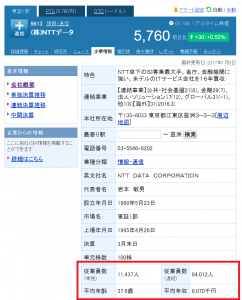
(2) Securities Reports
In addition to the basic information such as number of employees, average age and average annual income are listed in a securities report, average length of service of employees is also available. It is highly recommended if you would like to know more about the average length of service.
You can check the company’s securities report at EDINET (Electronic Disclosure for Investors’ NETwork, http://disclosure.edinet-fsa.go.jp/) of the Financial Services Agency. The website is also available in English. Press “Document Search”, enter the company name and select “Annual Securities Report/ Semiannual Securities Report/ Quarterly Securities Report”. “Data of Employees” is fully described in that.
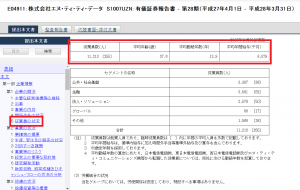
You should pay attention that if the company is newly established, the average length of service of employees will be very short.
(3) Japan Company Handbook
If you want to know more update information about the company, especially recommend “Japan Company Handbook”. This book publishes detailed corporate information such as average annual income, overtime pay, number of days taken off with pay, pay at age 30, and more. Original data such as turnover rate of new graduate after 3-year employment is also calculated.

More detailed information of small and medium-sized enterprises “Excellent SMEs and the Services Industry” is also recommended.

(4) Reviews
The above are public data provided by the companies. I do believe you are also interested in employee comments. The most straightforward way to do this is to ask for advices from those who work in the same industry or who are now working in the company you would like to join. If you do not know any relevant persons, you can take advantage of the SNS, or utilize recruitment companies to seek more specific information about the working conditions.
A Japanese company that is most feared by other companies!?
February 9, 2018
Do you know, recently there is a company that is feared by many Japanese executives, saying “it is the end if that company enters to our industry?”

The company is called DMM, which has over 40 business lines in 15 countries as of March 2017, including online video business, DVD/CD rental business, game business, online English conversational school, online securities, solar power generation and MVNO business etc.
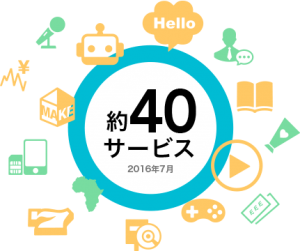
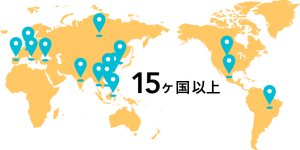
Although DMM may not be so well-known in foreign countries, we would like to introduce this Japanese company to you in this article.
It is a well-known fact that DMM is a company that has grown in the adult video business originally.
Let’s take a quick look at the company’s history. (A partial excerpt from Wikipedia)
============================
Late 80s – Mr. Kameyama, now the president, opened a rental video shop
1998 – Started AV distribution site “DMM”
2003 – Entered the online DVD rental business
2006 – Launched TV commercials
2009 – Acquired a securities company and entered the FX business
2012 – Entered the solar power generation business
2013 – Started the online English conversational school
2014 – Started DMM mobile (MVNO)
2016 – Launched DMM. Africa.
2017 – Started DMM Academy (Two-year private school)
============================
It is seen that DMM has spread its business extensively.
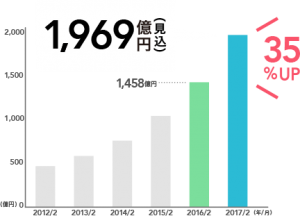
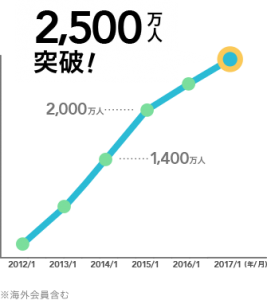
I think the following are the three key strengths of the company.
(1) Unlisted company
(2) Cash-rich
(3) Strategic power of Mr. Kameyama
Let’s look at this in more detail.
- Unlisted company
?
As DMM is an unlisted company, there is no need to publish the details of its business plan and the main source of revenue. DMM is ambitious aiming to the area that the company can win by analyzing various information including IR materials of other listed companies.
- Cash-rich
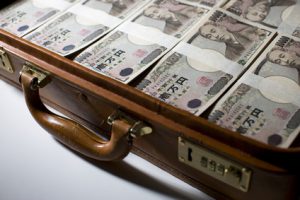
DMM has rich commercial profits in adult video business and has adopted a marketing strategy to invest liquidity in other business lines.
Especially its online English conversational school. The business began in 2013 that was later entered the industry, but DMM actively promote television advertising and offer low prices than others in the industry, contributing to its rapid growth. It is a strategy to raise prices after robbing market share.
- Strategic power of Mr. Kameyama

Mr. Kameyama led DMM to growth rapidly, but he seldom discloses his true face. However, he participates in many interviews and lectures, and his speech deeply impressed most of the audience. My impression on Mr. Kameyama can be concluded as one word of “Strategist”. As a manager, I also take off my hat to his strategic strength. He is thoroughly committed to only fight to win.
Business News Applications (NewsPicks) contains many conversations of Mr. Kameyama with other investors and celebrities, it is worth reading. It is easy to read as the contents are in a dialogue format, it would be useful for studying Japanese reading comprehension, studying strategy, and collecting information on related business.
https://newspicks.com/user/9314/
Japanese general trading companies were said to be handling various business lines “from ramen to rocket”, because they have developed a wide variety of business all over the world. And now, various business lines of DMM, from adult video to education, have been growth steadily.
New Japanese business that guarantees achievement!?
February 8, 2018
Today I will introduce a Japanese company that has a unique business model.
Do you know a company named RIZAP?
Rizap is a company that mainly manages a training gym.
If you are watching Japanese TV, you may remember it with its impressive CM.
https://www.youtube.com/channel/UCl3KNzEZkai5e9WQryNOjGA

The characteristics of RIZAP’s business are:
(1) 30 days Full repayment guarantee system
For any reason for 30 days from the start of the program, if you can not convince your achievement, they will refund you in full.
(2) High price
With the same features, RIZAP also operates golf schools and English conversation schools.
In RIZAP, the unit cost per lesson (50 minutes) is about 20,000 yen(*).
Golf lessons and English conversation lessons are roughly the same unit price. It is expensive, isn’t it?
(*)In the case of Body Make Standard Course 24 times, including membership fee
However, I think that this price setting was calculated precisely.
Because RIZAP can collect only serious people who want to take lessons even at high cost.
Also, those who can pay high cost, that is, people who can afford money tend not to complain so much.
Since Japanese tend not to complain too much, it may be a business model that succeeds only in Japan.
RIZAP’s performance seems to be growing steadily. Are there any similar business models in your country?
Double-jobber increasing in Japan!
February 7, 2018
In Japan, the way of thinking about side jobs is changing.
It became a hot topic that Softbank, Japan ‘s major telecom giant, allowed their workers to do side jobs since November 2017.
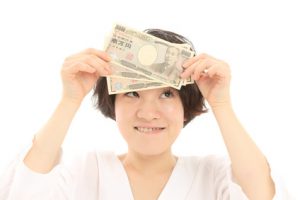 .
.
■ Why did this movement happen?
There are five main reasons.
- As a Japanese employment system, seniority and lifetime employment are famous, but this system is changing.
- Anxiety about pension.
- Pursuit of diverse lifestyle
- With the spread of nets and tools, it became easier to have side jobs.
・Because it is a shortage of talented people, it also has the aim of recruiting and holding excellent talent by allowing various ways of working.
■ Main side jobs being done in Japan
- Asset management (eg real estate management)
- Utilization of idle assets (eg Airbnb, Anyca) in the sharing economy * UBER is not operating in Japan.
- Second-hand goods sale (example: Amazon Marketplace, Ebay, Mercari, Yahoo auction)
- Internet Talent business, Internet Advertisement business (eg YouTuber, blogger)
- Utilize skills and qualifications (eg translation, interpreting, weekend soccer referee, rafting guide)
■ Side jobs unique to Non-Japanese people
There are an increasing number of Japanese people who start business for overseas / foreigners around me. So, in addition to translation, interpreting, demand for overseas market research etc seems to grow further. Language teachers will be needed more.
Your knowledge and skills are required more and more, but we strongly recommend that you check your employment rules and laws.
There are still many companies banning side jobs under the employment regulations. Please pay attention to VISA, too. If you earn income for operations other than what is stipulated in VISA, it will be regarded as “unauthorized activity” and become illegal here in Japan.
There is no doubt that opportunities are increasing, so follow the rules and get your success.
Recommended Japanese supermarket
February 1, 2018
When I go abroad, I try to go to the local supermarket as much as possible. Knowing what things are being sold and how much they are sold, it will be possible to imagine the lives of people living there.
Why do not you visit the supermarket in Japan for the same reason? I would like you to try not only people living in Japan, but also those who come to Japan on a trip.
So, although it is a very personal opinion, I chose four supermarkets in Japan that I would like to recommend.
No. 1 : OK
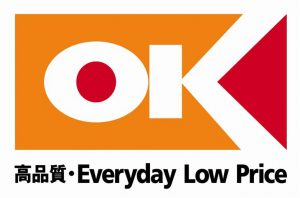
Among housewives surrounding me, the overwhelming popularity No. 1.
This company is thoroughly selling good things cheaply, so carefully selecting the type of goods. Therefore, although the number of items is not many, standard products and popular items are sold quite cheaply.
In addition, the company has an “onest (honest) card”, for example, it is written to understand the following information. “Grapefruit that we are selling is a South African varieties with strong acidity. Delicious grapefruit from Florida will arrive in December. ”
For this reason, the company is gathering a lot of trust from customers.
http://www.ok-corporation.co.jp/shop/index.php
No. 2 : KALDI

A company with many core fans. There are many unique things which are not sold at other stores, and it is fun just to watch. Many people come to buy “Pakuchi chips” etc.
The price range of Kaldy’s goods is higher than cheap supermarkets but cheaper than department stores. So I often use it when I want to buy “a little good one”.
At the entrance of the store, coffee put in a paper cup is distributed for free. If you find such a shop, I want you to look inside the shop. Because there are also many imported goods, you will surely find products that are familiar to foreigners.
https://www.kaldi.co.jp/english/
No. 3 (tie) : Ito Yokado & AEON
Both were chosen to be third in the same rate because (1) Net Super (*) is convenient, (2) Private brand is substantial.
Ito-Yokado is a line of Seven-Eye Group which operates Seven Eleven, has a long history, and is very familiar to Japanese people. Private brand called Seven Premium is also popular.
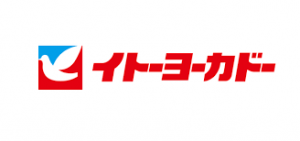
Aeon is the core company of the Aeon Group and has a supermarket such as MaxValue and Daiei and a Mini Stop of a convenience store. Private brand called top value is also popular.

Both of them have a large sales scale and are used by many Japanese people, so if you go to either of these, you will not fail.
http://www.itoyokado.co.jp/special/global/en/
*Net Super : Products can be purchased on the web and delivered to their homes.
“Which supermarket do you like the most?” Is a conversation topic that can be naturally formed with Japanese neighbors. Depending on the area, the popularity supermarkets will be different, so please do try it.
(Because I live in Kanagawa prefecture next to Tokyo, this article assumes Kanto residents)
Categories
Recent Posts
- I cannot keep up with meetings conducted in Japanese. Are there any good ways to study?
- Are there any good writing materials for business Japanese? (Three keys to developing business Japanese writing skills.)
- Are there any free materials available for studying business Japanese reading?
- Should I read newspapers for reading practice in business Japanese?
- Are there any good business magazines to practice reading business Japanese?
Archives
- August 2022
- June 2022
- May 2022
- April 2022
- March 2022
- February 2022
- January 2022
- October 2021
- January 2021
- August 2020
- July 2020
- June 2020
- May 2020
- April 2020
- March 2020
- February 2020
- January 2020
- December 2019
- November 2019
- October 2019
- September 2019
- August 2019
- July 2019
- June 2019
- May 2019
- April 2019
- March 2019
- February 2019
- January 2019
- December 2018
- November 2018
- October 2018
- September 2018
- August 2018
- July 2018
- June 2018
- May 2018
- April 2018
- March 2018
- February 2018
- January 2018
- November 2017
- October 2017
- July 2017
Tags
Social Media
- Prev
- Blog
- Next
